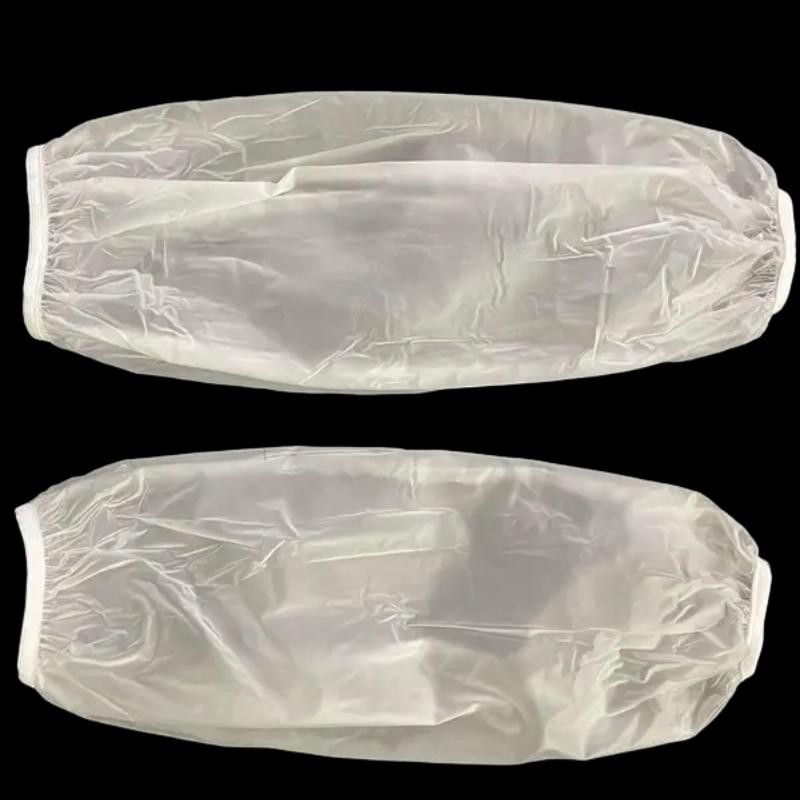Oct . 06, 2025 00:30 Back to list
PVC/PEVA Sleeves: Waterproof, Chemical-Resistant Protection?
Field Notes on Practical Protection: [PVC/PEVA Sleeves ] for Workshops and Labs
If you spend time on factory floors (I do, perhaps too often), you know arm protection is either an afterthought—or the first line of defense. Actually, both can be true. That’s why these PVC/PEVA Sleeves keep popping up in procurement lists across manufacturing, labs, hospitals, and even beauty salons. They’re durable, splash-savvy, and, to be honest, surprisingly comfortable compared with old-school rubberized sleeves.

What’s driving demand right now
Three trends: cost-effective chemical splash protection, easy sanitation, and lighter-weight materials that don’t roast your arms. Many safety managers tell me they’re shifting routine tasks from reusable cotton sleeves to PVC/PEVA Sleeves for better hygiene between shifts. In fact, PVC remains the benchmark for chemical splash resistance, while PEVA earns points for being lighter and phthalate-free.
Typical specs (real-world values may vary)
| Material | PVC or PEVA film, food-contact grade options available |
| Thickness | ≈0.15–0.30 mm (common); custom up to 0.40 mm |
| Length | ≈35–45 cm; elastic cuffs both ends |
| Water resistance | Hydrostatic pressure ≥10 kPa (ASTM D751, internal lab) |
| Tear/Tensile | ISO 13937/ISO 13934-1: tear ≥12 N; tensile ≥20 MPa (typical) |
| Temperature window | ≈-10°C to 50°C (PVC); ≈-5°C to 45°C (PEVA) |
| Service life | Up to 12–24 months in light-duty use; check weekly for cracks |
| Origin | No. 12, Shuangtong Road, Dahe Town, Luquan District, Shijiazhuang City, Hebei Province |
Where they’re used (and why)
- Workshops and assembly lines: oils, coolants, metalworking fluids.
- Laboratories: mild chemical splash and cleaning agents (always check SDS).
- Hospitals and cleaning teams: sanitation and disinfectants between wards.
- Food processing and salons: wet tasks, dyes, colorants—easy wipe-down.
Manufacturing and QA—quick tour
Material selection → calendered film or extrusion → pattern cutting → heat sealing or ultrasonic welding of seams → elastic cuff insertion → 100% leak check (air pressure) → visual QC → packaging. Testing references include EN 343 (water penetration, where relevant), ISO 13934-1 (tensile), ISO 13937 (tear), and ASTM D751 (hydrostatic). Some clients request REACH and RoHS material compliance. If flame exposure is a concern, note: standard sleeves are not FR; optional limited-flame-spread tests per ISO 15025 may be arranged.
Advantages I keep hearing about
- Good abrasion and splash resistance compared with cloth sleeves.
- PEVA option is lighter, low odor, and phthalate-free—popular in healthcare.
- Easy to sanitize; many customers say wipe-down between shifts is enough.
- Custom print and colors for department ID—surprisingly helpful on busy floors.
Customization menu
Thickness, length, film hardness (Shore A), elastic type (latex-free available), colors, logo print, retail polybag vs. bulk pack, and carton marks. Lead time usually 12–25 days depending on tooling and color matching.
Vendor snapshot (real-world buying criteria)
| Vendor | Certs | MOQ | Lead Time | Notes |
|---|---|---|---|---|
| Helee Garment (Hebei) | ISO 9001; material REACH/RoHS statements | ≈2,000 pairs | 12–20 days | Strong PEVA options; flexible color runs |
| Vendor B (Generic) | ISO 9001 | ≈5,000 pairs | 20–30 days | Lower price, fewer color choices |
| Vendor C (Regional) | ISO 9001/14001 | ≈1,000 pairs | 15–25 days | Eco focus; slightly higher unit cost |
Case snippets
Automotive machining plant: Switched to PVC/PEVA Sleeves for coolant tasks; reported sleeve replacements dropped ≈30% over 9 months and cleaning time per shift fell by ~10 minutes. “Less stink, fewer rips,” their supervisor joked.
Clinical sanitation team: PEVA models (latex-free cuffs) used for disinfectant wipe-downs. Feedback: lighter feel, no complaints of skin irritation, and faster donning/doffing between wards.
Compliance pointers (read before you buy)
- For chemical splash, align with EN 13034 guidance or OSHA hazard assessment; always verify compatibility via SDS.
- Ask for material safety declarations (REACH, RoHS) and test summaries (ASTM D751, ISO 13934-1/13937).
- If used near open flame or sparks, specify FR solutions—standard PVC/PEVA is not flame resistant.
Citations:
- OSHA 1910 Subpart I – Personal Protective Equipment. https://www.osha.gov/laws-regs/regulations/standardnumber/1910
- ISO 13934-1 & ISO 13937 – Textile tensile and tear testing. https://www.iso.org
- ASTM D751 – Coated fabric testing (hydrostatic, etc.). https://www.astm.org/d0751-20.html
- REACH regulation overview (ECHA). https://echa.europa.eu/regulations/reach
-
Comprehensive Guide to Post Mortm Kit Factories: Global Impact & Innovations
NewsNov.24,2025
-
Efficient Shroud Kit Pack Factory Solutions for Global Supply Chains
NewsNov.24,2025
-
Leading Shroud Kit Pack Exporter Solutions – Durable & Sustainable Packaging for Global Trade
NewsNov.23,2025
-
Reliable Shroud Kit Pack Manufacturer for Global Packaging Solutions
NewsNov.23,2025
-
Comprehensive Guide to Shroud Kit Pack Supplier: Global Insights & Industry Trends
NewsNov.23,2025
-
Reliable Shroud Kit Pack Suppliers for Global Protection & Logistics
NewsNov.22,2025





